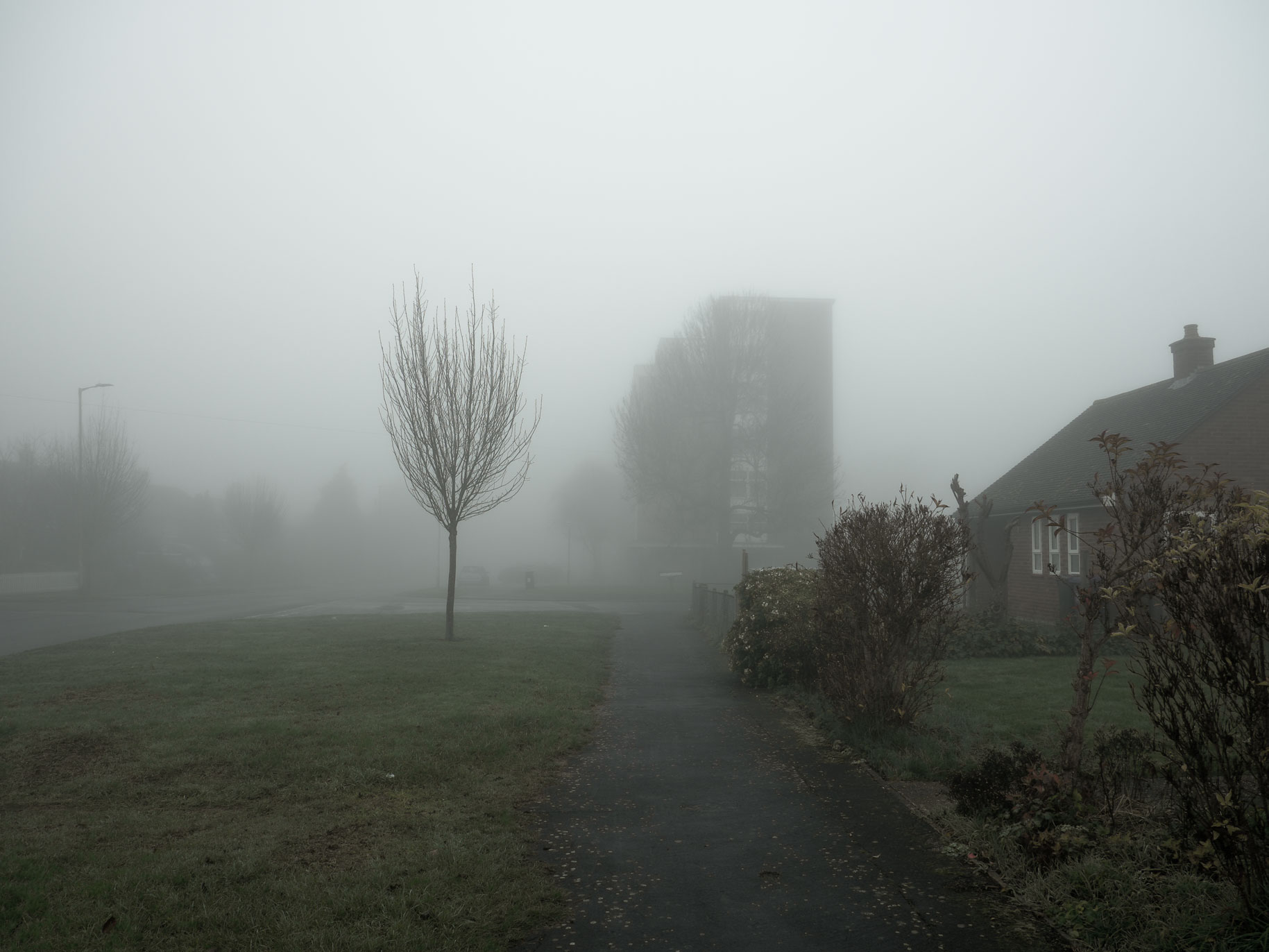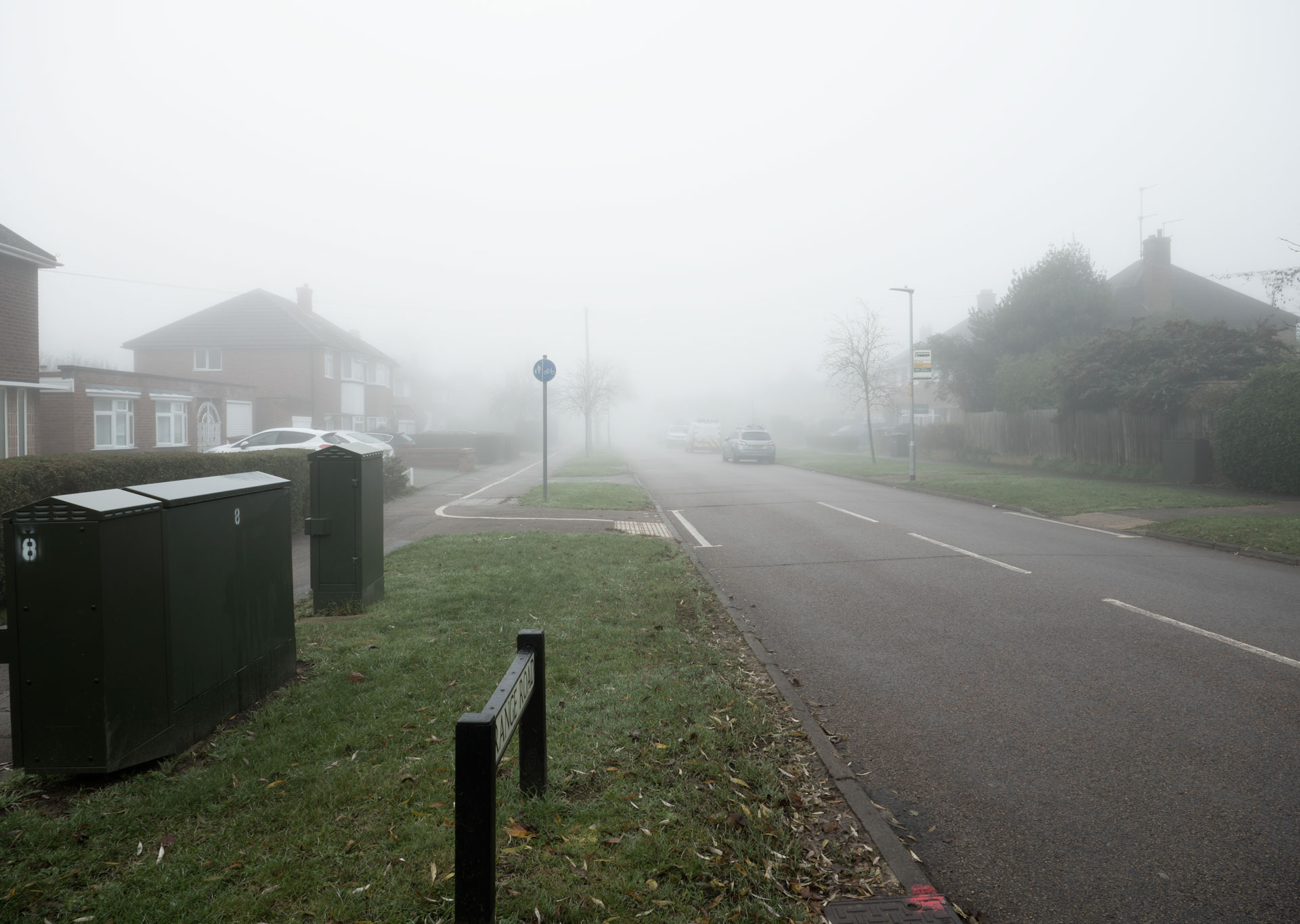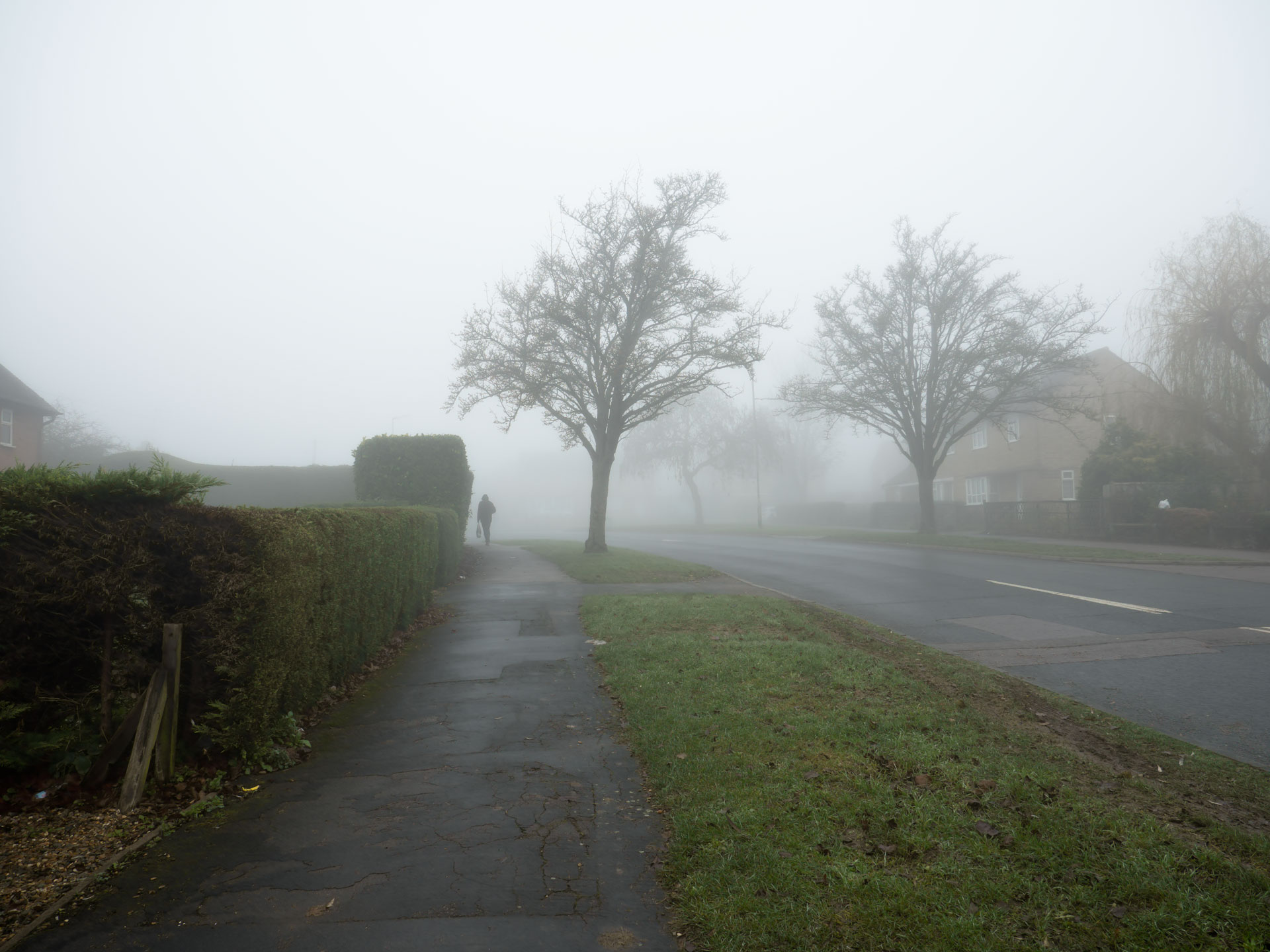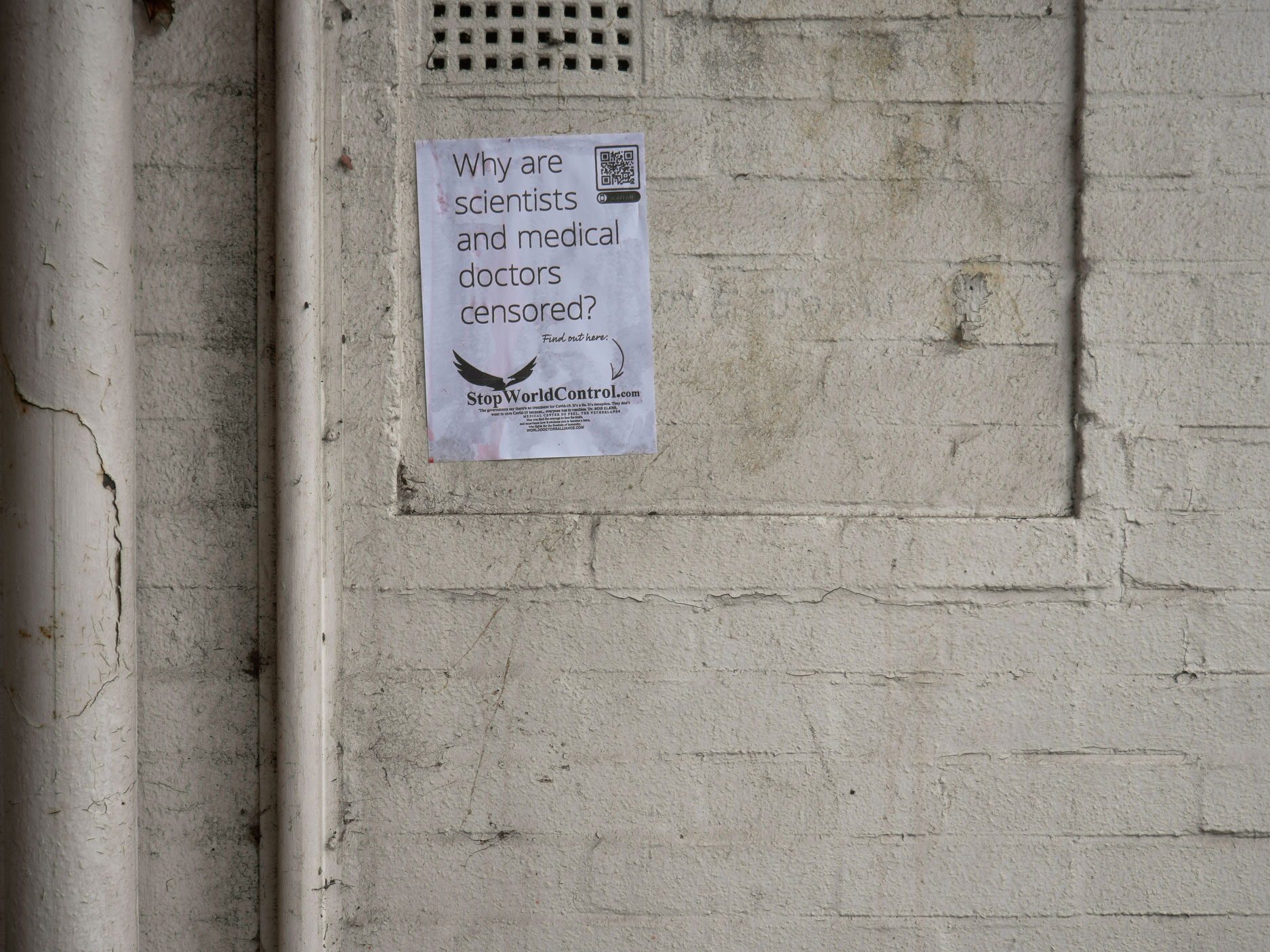
The Southfields bugler
In Letchworth Garden City, not much has changed in the last decades. In a time when the pandemic forced the nation to stand still, the author, John Vincent, reflects upon his own past and present embedded into this almost immutable backdrop. Through the lens of the camera, a short tour of what was once ‘home’ allows personal memories to come to the fore, revealing an intimate relationship with the familiar suburban landscape.
If you are familiar with Letchworth, the world’s first Garden City, then you will be aware of the Grange Estate.1 Lying to the north of the town, it is largely separated from the main part by Norton Common. The appearance of the houses is unlike the heritage part of the Garden City and have exposed brickwork rather than the commonly used white-painted roughcast or pebbledash. They tend to have gardens, front and back, typically separated by hedgerows and fences.

It is on this estate where I experienced early childhood from 1980, up until 1989 and where my Grandad, Sam Vincent, lived since at least the 1950s. Today, not much has changed on the estate architecturally speaking. It is mainly housing (semis and short terraces, usually), flats but no high-rise tower blocks. The Murco petrol station has gone, as have most of the garages behind the shops, replaced by flats. The local infill has not really altered the view that much and if I were to get into a time machine to go back to the 1980s, the main observable difference would be vehicles and fashion. Although I no longer live on the estate, I have, over the years, returned to photograph the area documenting what changes there are haunting the place like some future ghost.

Last year, early December 2020, I produced a body of work at a time which can now be seen as the run-up to the peak of the pandemic here in the UK. I had not realised, on this still and calm day, the portent contained within the images which were to follow until now. Indeed, one of the images contains what appears to be my first name in the form of graffiti, but so faded that I only noticed it when digitally developing the photographs. It was next to one of the bad signs.

The Grange was not part of the original plan of Letchworth and to align it with the rest of the Garden City project – the axis that runs from the Broadway and up through the common – you would need to pick it up and move it to a position around 50 metres to the right of Grange Road. This is where I used to live with my family.2

The impossibility of this action is obvious but the actual physical position of the estate lead to a strange quality of separateness that the foggy conditions shrouding the streets somehow epitomises. It shows an estate somewhat out of phase with the rest of the town and, somehow, with time.
In recent years, my Grandad, and his home on Southfields, represented the last remaining outpost of childhood. I would go there every Friday after school. My Nan would make tea and my siblings and I would watch 80s TV. A draughtsman by trade, my Grandad would bring home large quantities of used paper that we could draw on. One of his small eccentricities would be to sound a bugle in the street on New Year’s Day, which was also his birthday.

The window in the living room of my Grandparents house in Southfields looked out to a small fenceless front garden which at the time seemed like a small grassy hill which rolled down to the footpath and road. I always remember the area being very quiet – still even – much like the rest of the estate.
A long driveway leads up to a garage beside my Grandad’s house which has since been removed. I remember my Grandad and my Dad often working on our car on that drive. Cars seemed quite vulnerable to rust in those days. My Grandad’s skills came into use from serving in the British Army not long after World War II had ended having been in the Royal Electrical and Mechanical Engineers.

I come from a family with a strong interest in cycling. It was and remains my preferred method of transport. I remember using the bike to visit friends from school who also lived on the estate, to go to the park and hang out or just to go out on rides into the nearby countryside – unknowingly utilising a key feature of the Garden City ‘Three Magnets’ philosophy.3 One of the most admirable additions to the Grange in recent years is the bicycle lanes. Cycle route 12 runs through the estate.4 The authorities had been very harsh on cycling in the past with many restrictions so this was a breath of fresh air.

At the hub of the Grange there is a shopping mall where most people, including my Grandad, would visit. Located approximately central to the estate (also on Southfields), it has a variety of outlets with flats above. I arrived that morning on my bicycle to begin documentation, locking it to the cycle rack at the mall. Visible from the cycle rack is a row of shops at the ground level including a supermarket, an off-licence, a chip shop, a newsagent and a pharmacy. Above this are flats and perhaps some office or storage facilities for the shops themselves. There is a passageway in between the chip shop and the pharmacy running under the flats through which my old primary school can be seen in the distance on a clear day. I would regularly walk through this passageway on my way to school.

As I wandered around the estate, one of the more shocking observations I documented was what I now interpret as anti-vax posters. These were partly hidden from authority, lurking behind a community sign or in the shopping mall underpass but certainly visible to the casual passer-by. What damage would they cause? The vaccines were just about to become available to older people.5 For a long time now, vaccines have helped protect us from nature’s worst infections. I can only imagine that it is because of this success that large-scale disease and infection has become distant and faded from the collective memory much like the effect of the fog gripping the estate that day.

Just under a month after taking these photos, my Grandad was admitted to the Lister hospital in nearby Stevenage – he had contracted Covid-19. During his time there he reached his 93rd birthday. A few days later, my Grandad succumbed to the infection and passed away. Southfields on New Year’s Day was silent to the sound of the bugle.
Footnotes & references
[1] Letchworth Garden City is in England, United Kingdom and was founded by Ebenezer Howard in 1903.
[2] The Grange Estate’s construction began in 1947.
[3] The Three Magnets: https://journals.openedition.org/cve/docannexe/image/3605/img-2-small580.jpg
[4] Cycle route 12 runs from Enfield Lock in London to Spalding. https://www.sustrans.org.uk/find-a-route-on-the-national-cycle-network/route-12/
[5] “Covid-19 vaccine: First person receives Pfizer jab in UK“ BBC News: https://www.bbc.co.uk/news/uk-55227325
All image by John Vincent
Recent articles

Southern California is many things. Quite infamously, it is known as a landscape defined by the automobile, from the emergence and diffusion of the highway system to fast food burgers, and the suburbanization of the United States. Walking this place then, would seem not only inconvenient, but ill advised. In… Read more »

What is today known as ‘whistleblowing’ could once take the form of interacting with a threatening gaze carved into the city wall. It is the case of the ‘boche de Leon’ or ‘lion’s mouths’ disseminated by the old Venetian Republic throughout its territory to suppress illegal activities. Through a close… Read more »

As he navigates through the recurrent lockdowns of the pandemic, stranded between hitchiking and muggings, job hunting and separations, Fabio Valerio Tibollo rediscovers photography as a powerful coping mechanism. Recording everything that happened around him for one year straight, from attending momentous events to finding curiosity in shots of simple living,… Read more »

